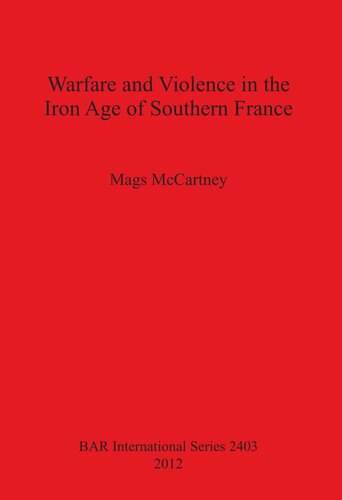

Most ebook files are in PDF format, so you can easily read them using various software such as Foxit Reader or directly on the Google Chrome browser.
Some ebook files are released by publishers in other formats such as .awz, .mobi, .epub, .fb2, etc. You may need to install specific software to read these formats on mobile/PC, such as Calibre.
Please read the tutorial at this link: https://ebookbell.com/faq
We offer FREE conversion to the popular formats you request; however, this may take some time. Therefore, right after payment, please email us, and we will try to provide the service as quickly as possible.
For some exceptional file formats or broken links (if any), please refrain from opening any disputes. Instead, email us first, and we will try to assist within a maximum of 6 hours.
EbookBell Team

5.0
68 reviewsThis study aims to identify patterns of warfare in the southern French Iron Age through examination of the documentary, settlement, iconographic and osteological evidence for warfare in this region, each within its chronological context and in tandem with one another. The Iron Age of southern France remains relatively unknown in the English-speaking archaeological world. The best known aspects of the archaeological material suggest a society in which warfare was an overriding preoccupation. Major, fortified centres, such as Entremont and Saint-Blaise, and the tradition of 'warrior statues' like those from Entremont and Roquepertuse, suggest that conflict was a recurrent theme. Literary sources, such as Poseidonius have described the indigenous populations of this area as a volatile and warlike people who took the heads of their enemies from the battlefield and displayed or preserved them in their settlements. Finds of skulls, some with nails still embedded in the bone, appear to verify such reports. The pattern of warfare which emerges from this analysis is then discussed within some of the more prominent models of social-anthropological study. This case study offers a more nuanced and contextual interpretation of warfare in the southern French Iron Age and demonstrates how, if treated as a form of social interaction, rather than a breakdown in social norms, might be integrated into wider archaeological interpretations of social and political change.